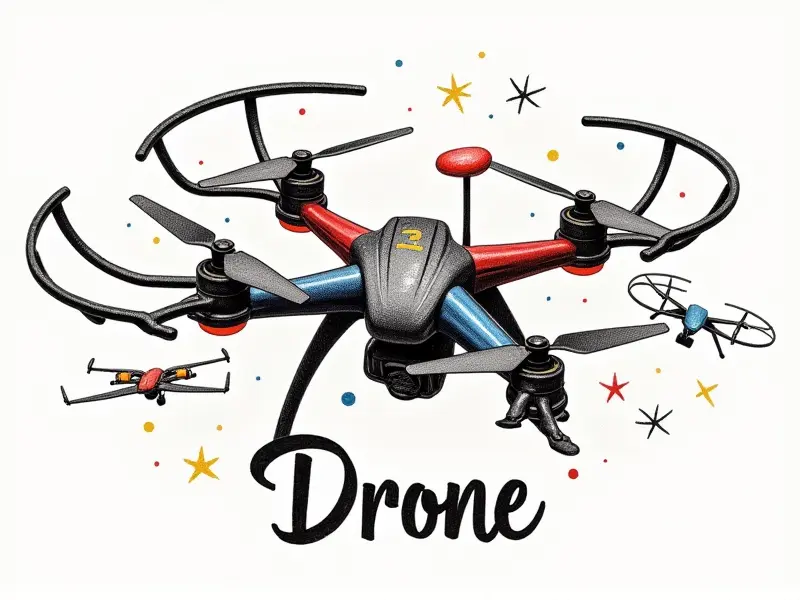Can I 3D print my drone parts?

DIY Drone Building with 3D Printed Parts
The world of drone building has evolved significantly, offering enthusiasts the opportunity to create custom and unique flying machines. One of the most exciting advancements in this field is the ability to use 3D printing technology for drone parts. This not only allows for customization but also provides a cost-effective solution for replacing damaged components or experimenting with new designs.
Enhance Your Drone with 3D Printed Parts
Whether you're looking to improve performance, extend the flight time of your drone, or simply add a personal touch, 3D printing can help you achieve these goals. By using high-quality materials and precise manufacturing techniques, you can create parts that are lightweight yet durable, enhancing both the functionality and aesthetics of your drone.
How to Start 3D Printing for Your RC Aircraft
If you're new to 3D printing and want to incorporate it into your drone building process, there are several steps you can follow:
- Select the Right Printer: Choose a printer that suits your needs, considering factors like build volume, print quality, and material compatibility.
- Design Your Parts: Use CAD software to design or modify existing drone parts. Ensure your designs are optimized for 3D printing by paying attention to wall thicknesses, infill density, and support structures.
- Test Prints: Start with small test prints to ensure the quality of your printer and materials before moving on to more complex components.
Crafting Unique Drones via 3D Printing
The true power of 3D printing lies in its ability to enable customization. With this technology, you can create drones that are uniquely tailored to your preferences or specific needs. Whether it's a race drone with aerodynamic enhancements or a multi-rotor designed for aerial photography, the possibilities are endless.
The Future of Drone Parts: 3D Printing
As technology advances, we can expect to see more sophisticated materials and printing techniques used in drone manufacturing. This could lead to stronger, lighter parts that offer improved performance and durability. Additionally, advancements in automation will make the process even more accessible for hobbyists.
Upgrading Drones with 3D Printed Parts
One of the most appealing aspects of using 3D printing is its flexibility when it comes to upgrading your drone. You can easily swap out components or add new features without having to purchase an entirely new unit. This not only saves money but also allows for continuous improvement and experimentation.
Best Materials for 3D Printed Drones
Selecting the right material is crucial when it comes to printing drone parts. Some of the most popular choices include:
- PLA (Polylactic Acid): A biodegradable plastic that's easy to work with and provides good print quality.
- ABS (Acrylonitrile Butadiene Styrene): Known for its durability, ABS is a popular choice for parts requiring strength and flexibility.
- Nylon: Offers excellent mechanical properties and can withstand high temperatures, making it ideal for structural components.
Guide to 3D Printing Your Drone Components
To successfully print your drone components, follow these guidelines:
- Choose the Right Software: Use CAD software like Tinkercad or Fusion 360 for designing parts.
- Optimize Print Settings: Adjust settings such as layer height, infill density, and print speed to achieve optimal results.
- Post-Processing: Sanding and painting your printed parts can enhance their appearance and durability.
Exploring 3D Printing in Drone Construction
The integration of 3D printing into drone construction opens up a world of possibilities. From creating custom frames to designing innovative propellers, the ability to fabricate components on demand allows for greater creativity and adaptability.
Maximizing 3D Printing for Custom Drone Builds
To get the most out of your 3D printing capabilities when building drones:
- Leverage Online Communities: Join forums and social media groups to share ideas, troubleshoot issues, and learn from others.
- Experiment with Designs: Don't be afraid to try out new concepts or modify existing ones to suit your needs.
- Invest in Quality Materials: Using high-quality filament can significantly impact the performance of your printed parts.
From Idea to Flight: 3D Print Your Drone Parts
The journey from concept to a flying drone is an exciting one, especially when you're using 3D printing. By following best practices and continuously refining your techniques, you can create drones that are not only functional but also visually stunning.
Conclusion
3D printing offers unparalleled opportunities for those interested in building or modifying their own drones. Whether you're a hobbyist looking to customize your flying machine or an engineer designing cutting-edge technology, the ability to print drone parts can take your projects to new heights. Embrace this innovative technology and unlock endless possibilities in the world of unmanned aerial vehicles.

